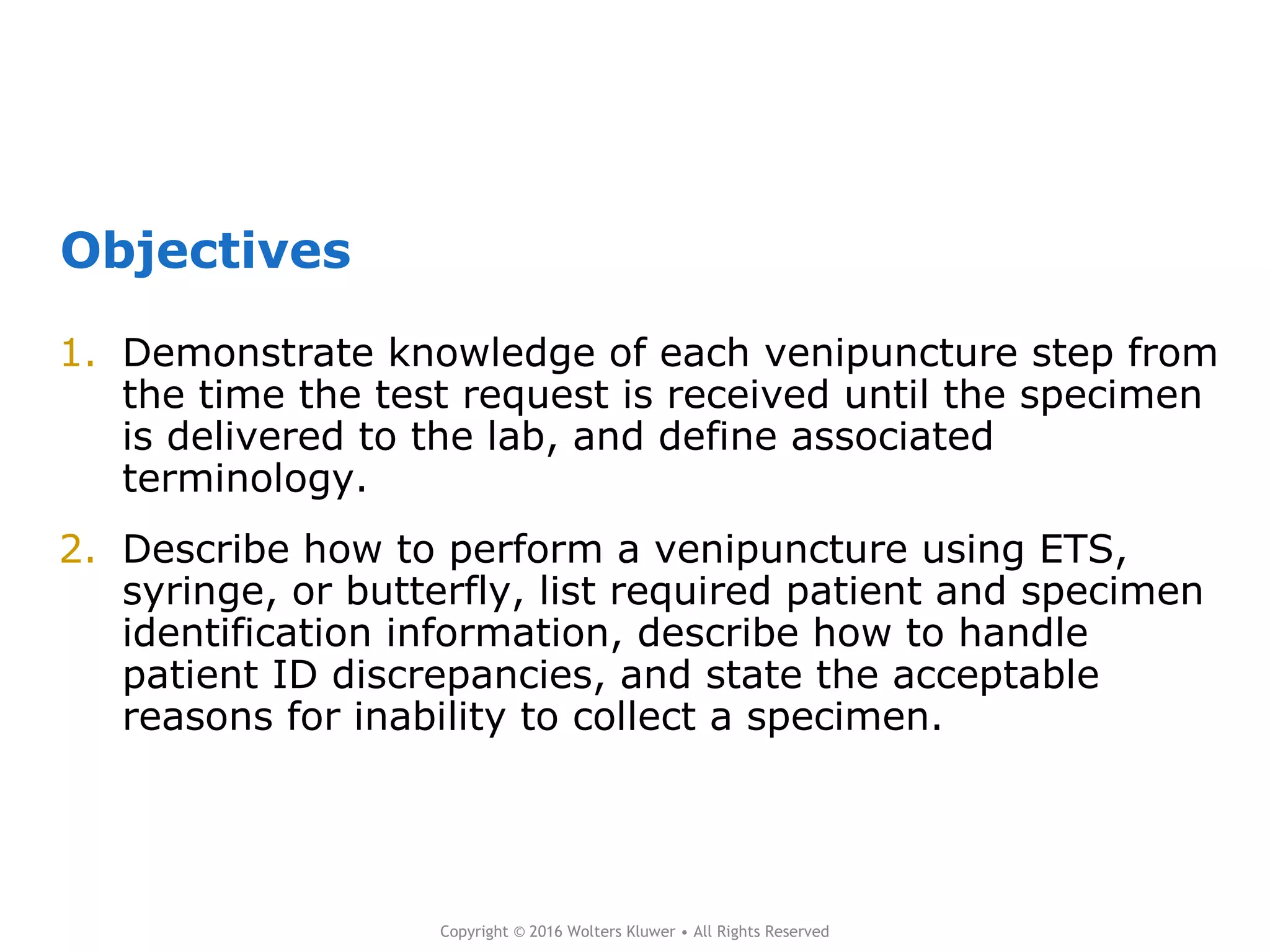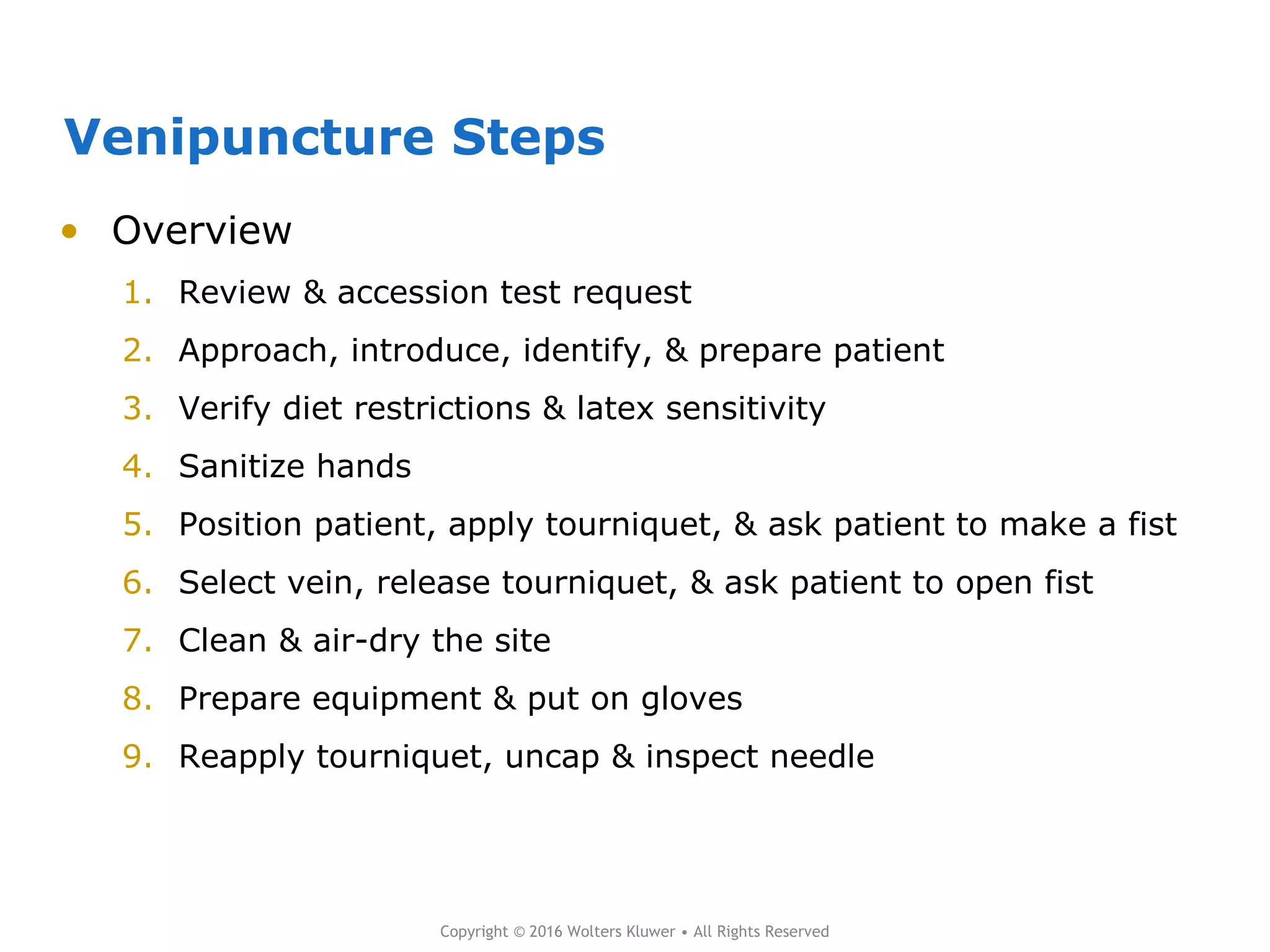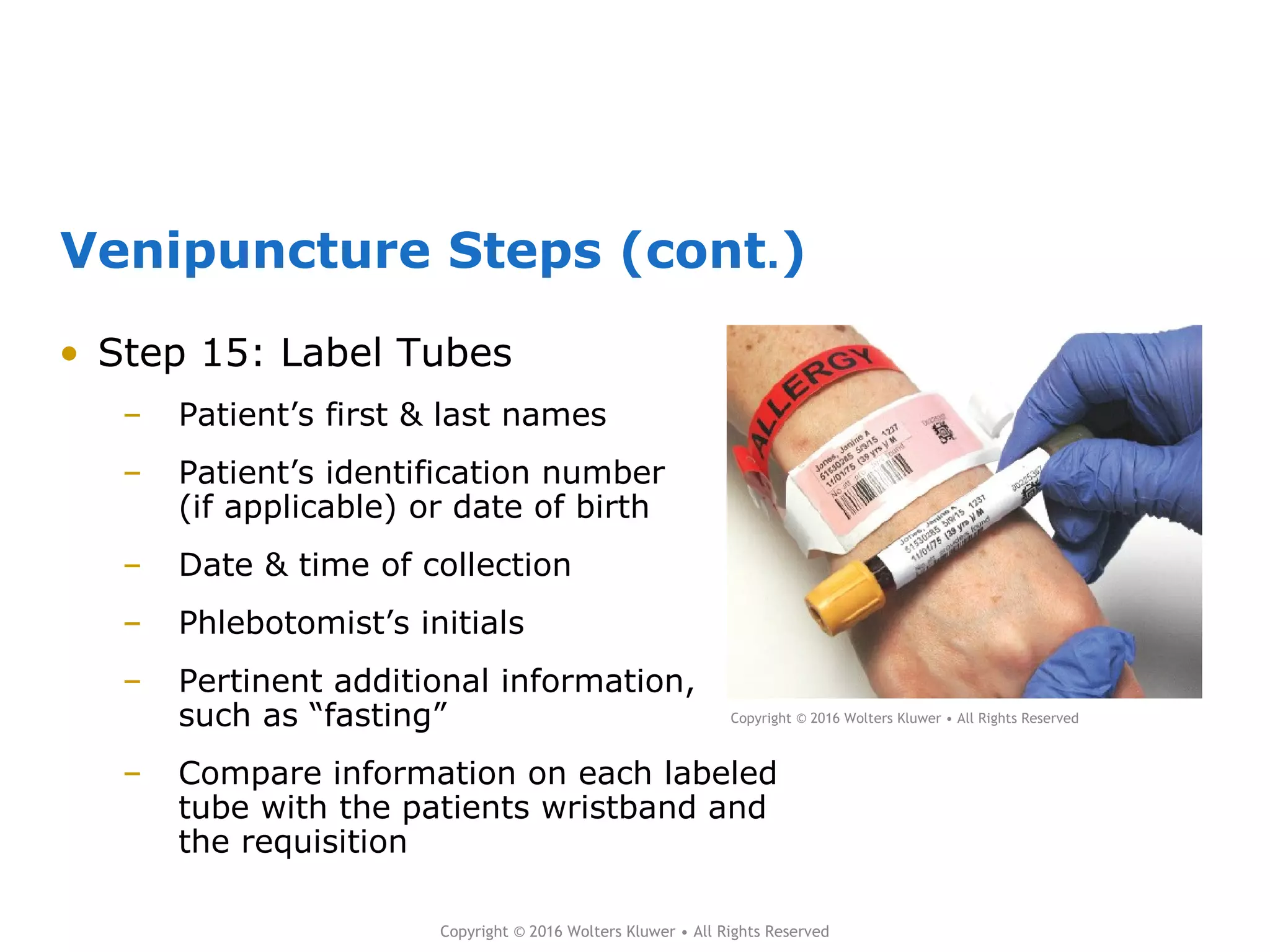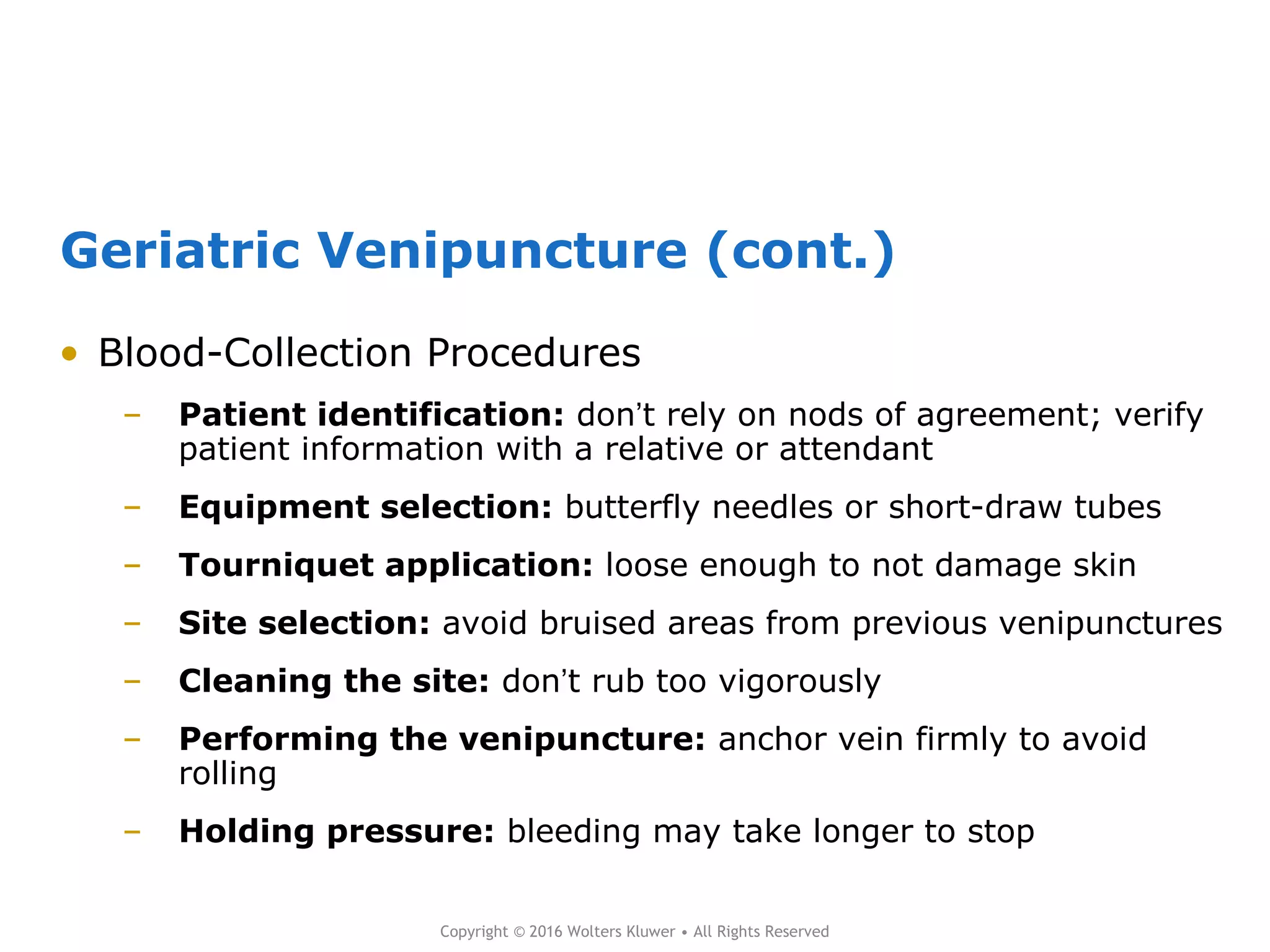This document outlines the steps for performing venipuncture, which is the process of collecting blood from a vein. It describes the 19 steps of venipuncture in detail, from reviewing the test request to transporting the specimen to the lab. Key steps include properly identifying the patient, selecting and preparing the vein, inserting and anchoring the needle, filling collection tubes in the correct order, and applying pressure after removing the needle. Special considerations for patients like pediatrics, geriatrics, and those requiring dialysis are also addressed.















































